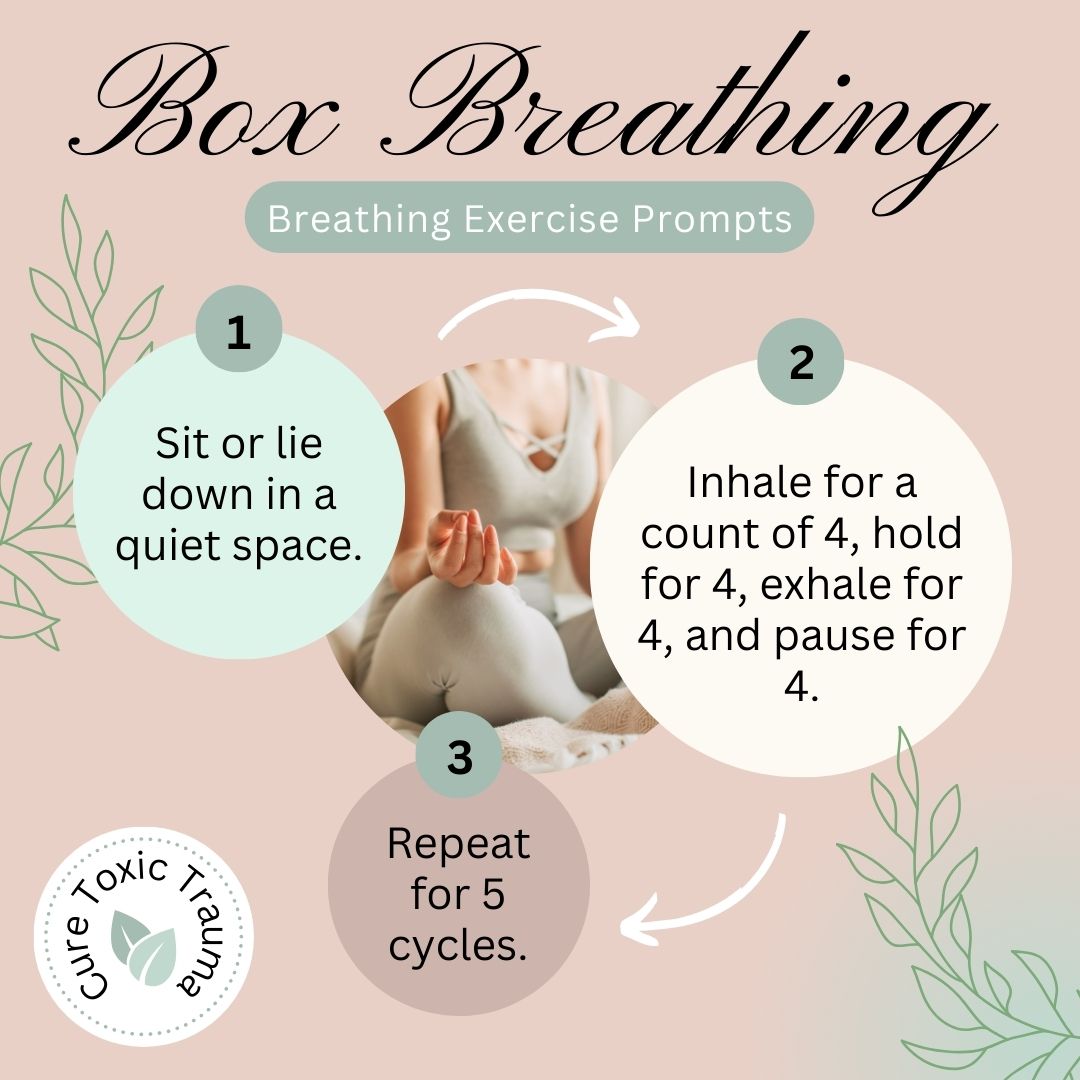 Introduction
Introduction
In the hustle and bustle of modern life, stress and anxiety have become all too common. Many people are finding it increasingly challenging to navigate the constant demands of work, personal responsibilities, and societal pressures. According to the National Institute of Mental Health, anxiety affects 19.1% of adults in the U.S. today, making it one of the most prevalent mental health issues.
So, how can we effectively counteract anxiety and find peace amidst the chaos? Enter box breathing – a simple yet powerful breathing technique that can help manage stress and promote a sense of calm. Often used by elite performers like Navy SEALs and professional athletes, box breathing has proven to be an effective tool for mental clarity, emotional regulation, and overall well-being. In this guide, we will explore what box breathing is, how to practice it, its many benefits, and how you can integrate it into your daily life for maximum impact.
What Is Box Breathing?
Box breathing, also known as four-square breathing, is a controlled breathing technique that involves four equal phases of breathing: inhaling, holding, exhaling, and holding again. Each phase is typically done for four counts, creating a rhythmic cycle that resembles a “box.” This method is commonly used by Navy SEALs and athletes to stay centered during high-stress situations.
The origins of box breathing can be traced back to practices in yoga and meditation, which have long emphasized controlled breathing as a means of achieving mental and physical balance. Scientific studies have found that controlled breathing exercises can activate the parasympathetic nervous system, which helps counteract the body’s stress response. One notable example is how Navy SEALs use this technique to maintain focus during intense missions, demonstrating its effectiveness in mitigating stress.
How to Practice Box Breathing
Box breathing is a straightforward exercise that anyone can do. Here is a step-by-step guide to help you start your practice:
- Find a Comfortable Position: Sit in a comfortable chair or lie down. Keep your back straight and close your eyes if it feels comfortable.
- Breathe In: Inhale deeply through your nose for a count of four, focusing on drawing the air into your diaphragm.
- Hold the Breath: Hold your breath for another count of four, keeping your body relaxed.
- Exhale: Slowly exhale through your mouth for a count of four, releasing the tension.
- Pause: After exhaling, hold for another count of four before starting the cycle again.
Repeat this cycle for 2-5 minutes. As a beginner, it may be challenging to keep an even pace, but with practice, your rhythm will improve. Focus on counting evenly and imagine each breath traveling through a square path – inhaling up one side, holding across the top, exhaling down the other side, and holding along the bottom.
Many people report an immediate sense of calm after just a few rounds of box breathing. User testimonials often describe an enhanced ability to manage stress and a noticeable reduction in anxiety levels.
 Benefits of Box Breathing
Benefits of Box Breathing
Box breathing offers numerous benefits that extend beyond just calming the nerves. Here are some key advantages of practicing this technique regularly:
1. Reduces Anxiety and Stress
Box breathing works by activating the parasympathetic nervous system, which helps bring the body into a state of rest and relaxation. This counteracts the “fight-or-flight” response triggered by stress and anxiety. Studies show that deep, controlled breathing can help reduce cortisol levels, promoting a more balanced emotional state.
2. Enhances Focus and Mental Clarity
Another benefit of box breathing is the enhanced focus that it provides. By regulating your breath, you increase the amount of oxygen flowing to your brain, which helps sharpen your concentration and improve mental clarity. Business leaders and athletes have reported using box breathing before high-pressure situations to improve their performance.
3. Supports Emotional Regulation
By focusing on your breath, you learn to detach from intense emotional reactions. Box breathing promotes mindfulness, giving you space to pause, reflect, and respond thoughtfully rather than reacting impulsively to stressful situations.
4. Promotes Mindfulness and Relaxation
The rhythmic nature of box breathing aligns well with other mindfulness practices, making it a useful tool for relaxation. By engaging in this form of controlled breathing, you can calm racing thoughts, enter a meditative state, and foster a sense of inner peace.
Relevant Data
Research has shown that controlled breathing can help regulate the heart rate and lower blood pressure, further aiding in relaxation and overall well-being. This highlights the physiological benefits that make box breathing a powerful addition to any relaxation routine.
When to Use Box Breathing
Box breathing is versatile and can be used in various situations where you need to find calm or center yourself. Here are some scenarios where it can be particularly helpful:
- During Moments of Stress: Use box breathing to immediately counter feelings of anxiety or overwhelm, whether you’re in a work meeting, experiencing a conflict, or feeling overloaded.
- Before Important Events: Practicing box breathing before public speaking, an important exam, or a job interview can help calm pre-event nerves.
- Before Bedtime: Box breathing can be a helpful tool for winding down and preparing your body for rest, especially if you struggle with racing thoughts at night.
- First Thing in the Morning: Starting your day with box breathing can help you set a positive, focused tone, boosting your productivity and resilience.
Many have reported a sense of renewed emotional stability after using box breathing during challenging circumstances. The technique has proven effective for emergency responders, healthcare workers, and others working in high-pressure environments.
 Tips for Success
Tips for Success
To make the most out of your box breathing practice, consider these simple tips:
- Create a Conducive Environment: Find a quiet spot where you won’t be disturbed. Dimming the lights or adding calming background music can also enhance the experience.
- Start Small: Begin with just a few rounds of box breathing and work your way up as you become more comfortable.
- Use Visualization Techniques: Imagine a calming image or visualize the breath moving through a square as you breathe in and out. This can deepen the relaxation effect.
Remember, box breathing is a skill – the more you practice, the better you will become at achieving a state of relaxation and mindfulness.
Conclusion
Box breathing is a powerful tool for managing stress, enhancing focus, and promoting overall well-being. Whether you’re dealing with daily stress or looking for ways to deepen your mindfulness practice, box breathing is a simple yet effective technique that anyone can incorporate into their routine. Try it out today and experience the difference it can make in your mental and physical health.
FAQ Section
What is box breathing?
Box breathing is a mindfulness technique involving four-phase breathing cycles: inhale, hold, exhale, and pause—each for four counts.
How long should I practice box breathing?
Aim for 2-5 minutes at a time, adjusting as necessary based on comfort.
Can box breathing help with anxiety?
Yes, it activates the parasympathetic nervous system, reducing stress and promoting calm.
Is box breathing suitable for everyone?
Generally, yes. However, individuals with severe breathing conditions should consult a doctor.
How often should I practice box breathing?
As often as needed! Many find it helpful before stressful events or at the end of their day.
What should I do if I feel uncomfortable?
If four-second counts feel too long initially, adjust to shorter times and gradually increase.
Can box breathing improve my focus?
Yes! Improved oxygen flow to the brain can enhance clarity and concentration.
External Links to Include
- Statistics on anxiety disorders – National Institute of Mental Health
- Breathing techniques for stress relief – Verywell Mind
- Learn about various breathing exercises – Healthline
Ready to take a powerful step forward on your healing journey? Our free Emotional Healing Workbook is here to support you every step of the way. It’s filled with practical tools, guided exercises, and gentle prompts to help you release the weight of emotional trauma and start feeling like yourself again. Take that first step towards emotional freedom today—click below and begin your path to well-being and inner peace.






Leave a Reply